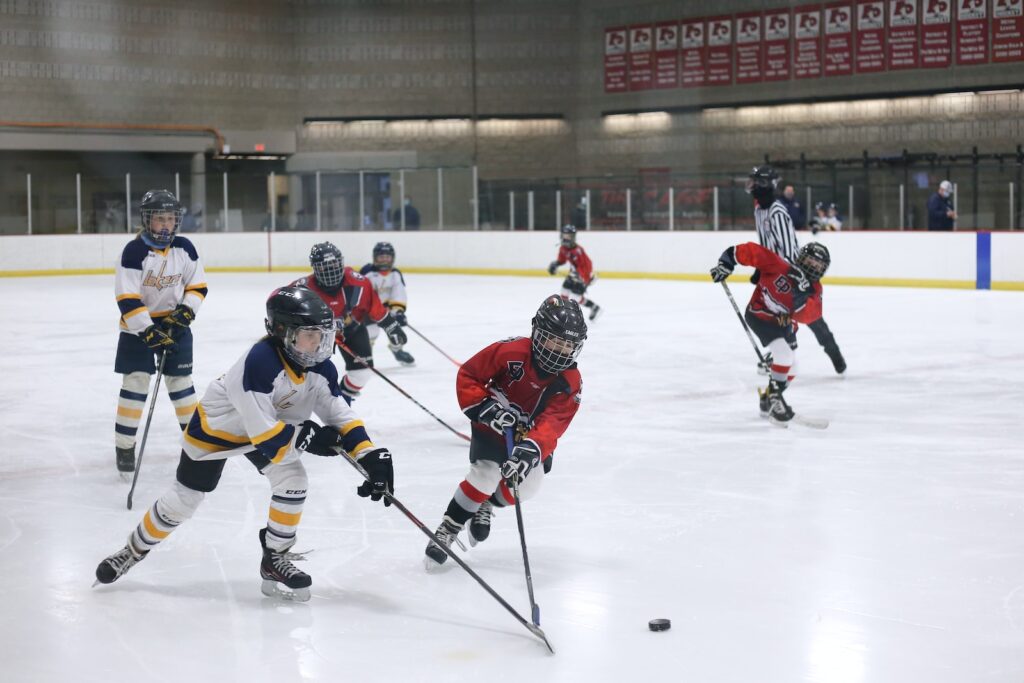Hockey is a physically demanding sport that requires strength, agility, and endurance. While hockey players are conditioned to withstand the rigors of the game, injuries can still occur. Muscle injuries, in particular, are common among hockey players and can significantly impact their ability to play. In this article, we will explore common muscle injuries in hockey players, strengthening exercises, recovery and rehabilitation after a hockey injury, and tips to prevent hockey-related muscle injuries.
Common Muscle Injuries in Hockey Players
Hockey players are at risk for a variety of muscle injuries due to the physical demands of the sport. Some of the most common muscle injuries include:
- Groin strain: The groin muscles, located on the inner thigh, are commonly strained in hockey players due to the quick stops, starts, and changes of direction required in the game.
- Hamstring strain: The hamstring muscles, located on the back of the thigh, are often strained in hockey players due to the intense skating motions required in the sport.
- Quadriceps strain: The quadriceps muscles, located on the front of the thigh, can be strained during sudden stops and changes of direction.
- Hip flexor strain: The hip flexor muscles, located on the front of the hip, can be strained during the quick movements and twisting motions required in hockey.
Strengthening Exercises for Hockey Players
Strengthening exercises are essential for hockey players to build muscle endurance, improve speed and agility, and prevent injuries. Here are some exercises that can help:
- Squats: Squats are a great exercise for building lower body strength. They can be done with or without weights, and variations can be added to target specific muscle groups.
- Lunges: Lunges are a great exercise for building strength in the quadriceps, hamstrings, and glutes. They can be done forward, backward, or sideways, and can also be done with weights.
- Calf raises: Calf raises help build strength in the calves, which are essential for skating. They can be done with or without weights.
- Core exercises: Core strength is essential for stability and balance on the ice. Exercises like planks, Russian twists, and bicycle crunches can help build core strength.
Recovery and Rehabilitation after a Hockey Injury
After an injury, it is important to rest and allow the body to heal before returning to play. However, rest alone may not be enough to restore full function to the injured muscle. Therefore, rehabilitation exercises are necessary to restore strength, flexibility, and function to the injured muscle. These exercises should be performed under the guidance of a trained physical therapist or sports medicine specialist.
Rehabilitation exercises may include a combination of stretching, strengthening, and range of motion exercises. The goal of these exercises is to gradually increase the strength and flexibility of the injured muscle, as well as to prevent future injuries. Common exercises for hockey players include:
- Isometric exercises: These exercises involve contracting the muscle without actually moving the joint. Isometric exercises are useful for early-stage rehabilitation when movement is still painful.
- Strengthening exercises: These exercises focus on strengthening the injured muscle as well as surrounding muscles to prevent future injuries. Examples include squats, lunges, leg presses, and calf raises.
- Range of motion exercises: These exercises are designed to improve joint mobility and flexibility. They may include stretches and movements that target the hips, knees, ankles, and shoulders.
Preventing hockey-related muscle injuries
Of course, the best way to recover from a hockey injury is to avoid getting injured in the first place. Here are some tips for preventing hockey-related muscle injuries:
- Warm up and stretch: Before playing hockey or engaging in any other physical activity, make sure to properly warm up and stretch your muscles. This can help prevent muscle strains and other injuries.
- Wear proper equipment: Make sure to wear the proper equipment when playing hockey, including a helmet, shoulder pads, elbow pads, gloves, shin guards, and skates. This can help protect you from injuries to the head, shoulders, elbows, hands, and feet.
- Use proper technique: When skating, shooting, passing, and checking, use proper form and technique to avoid straining your muscles or causing other injuries.
- Take breaks when needed: If you feel tired or fatigued during a game, take a break and rest for a few minutes. Pushing yourself too hard can lead to injuries.






